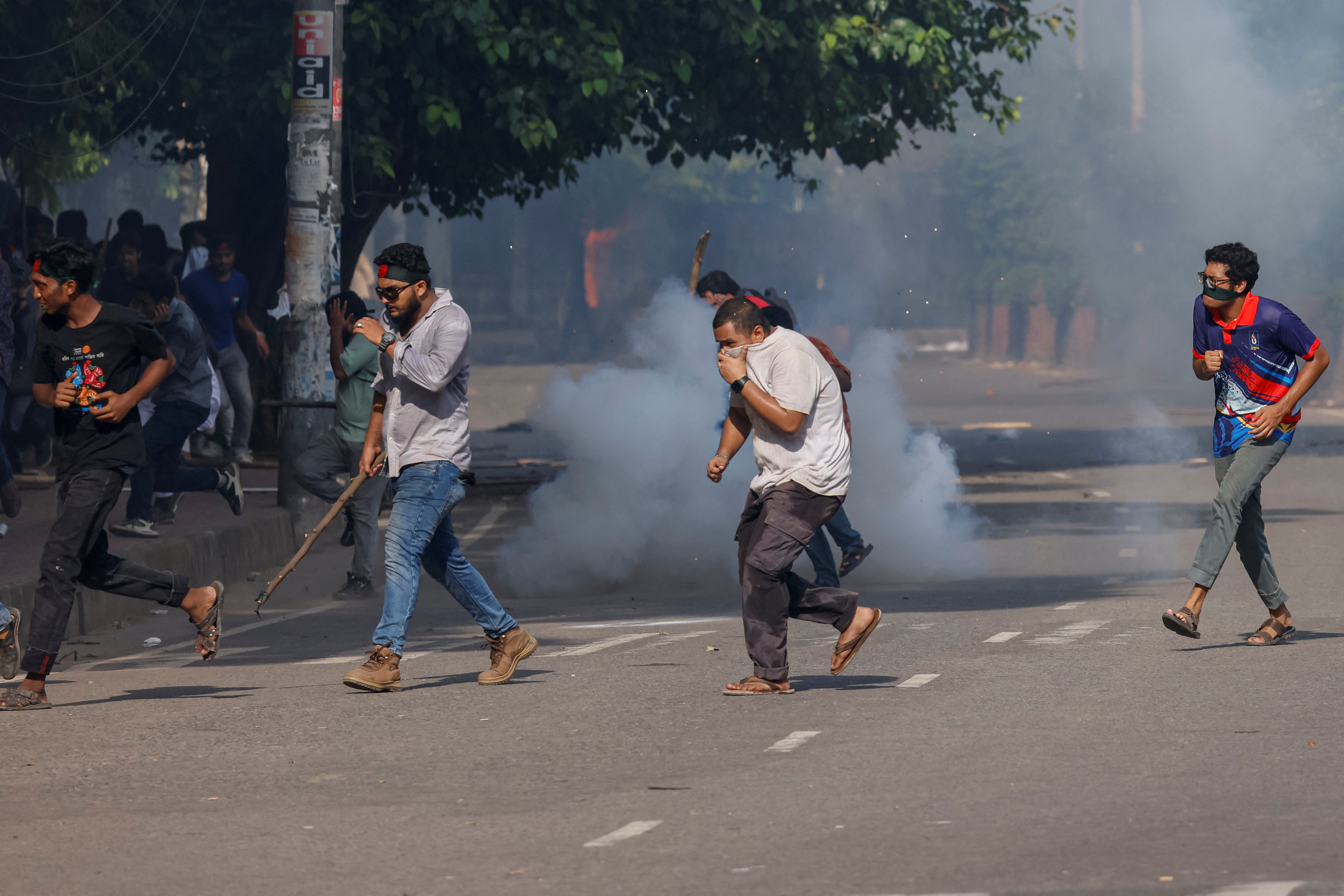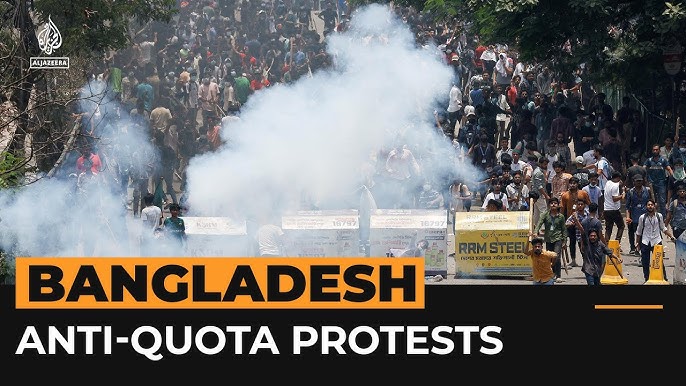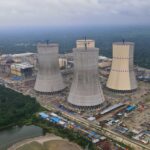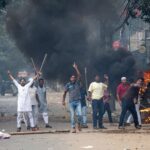The Bangladesh Anti-Quota Protest was a movement against the country’s civil service quota system. Students and job seekers led the protests.
The anti-quota protests in Bangladesh began in 2013 but gained significant momentum in 2018. Protesters demanded reforms to the civil service quota system, which reserved 56% of government jobs for specific groups. They argued this system was unfair and limited opportunities for meritorious candidates.
The movement saw large-scale demonstrations, particularly from university students. These protests highlighted the need for a more merit-based approach in government hiring. The government eventually promised to review and reform the quota system, marking a significant victory for the protesters. The movement remains a notable example of youth activism in Bangladesh.
Origins Of The Movement
The Bangladesh Anti-Quota Protest emerged from widespread dissatisfaction. Students and job seekers felt the quota system was unfair. This system reserved 56% of government jobs for specific groups. The movement sought a more merit-based approach.
Initial Grievances
The initial grievances centered around the large percentage of reserved jobs. Many felt that this system limited opportunities for deserving candidates. Students believed that the quota system favored certain groups too much. This led to a sense of injustice among the general populace.
Protestors demanded a reduction in the quota percentage. They wanted a fairer distribution of government job opportunities. The movement quickly gained traction in universities across Bangladesh.
Key Figures
Several key figures emerged as leaders of the movement. These individuals played a crucial role in organizing protests and rallies.
- Hasan Al Mamun: A prominent student leader who voiced the demands of the protestors.
- Nurul Haque Nur: Another key figure, who became a symbol of the anti-quota movement.
- Rashed Khan: Actively involved in mobilizing students and raising awareness.
These leaders united students from various universities. Their efforts brought national attention to the issue. The movement’s momentum grew rapidly, leading to significant government response.

Credit: www.youtube.com
Major Protests
The anti-quota protest in Bangladesh has been a significant movement. Students and job seekers have led the charge. They demand an end to the quota system in government jobs. This section dives deep into the major protests.
Timeline Of Events
| Date | Event |
|---|---|
| April 8, 2018 | Students began protests at Dhaka University. |
| April 9, 2018 | Protests spread to other universities. |
| April 11, 2018 | Government promised to review the quota system. |
| July 2, 2018 | Protests resumed after no action was taken. |
Notable Demonstrations
- Dhaka University Protests: Thousands of students gathered at Dhaka University. They called for the end of the quota system. This was the start of the movement.
- National University Protests: Students from National University joined. The movement gained nationwide attention.
- Chittagong University Protests: Protests spread to Chittagong University. Students there held sit-ins and rallies.
The anti-quota protest became a nationwide movement. Students and job seekers united for a common cause. They used social media to organize and spread their message. The protests were peaceful but powerful.
Government Response
The Bangladesh Anti-Quota Protest saw a significant reaction from the government. Here’s an in-depth look at how the government responded through official statements and policy changes.
Official Statements
The government initially released various official statements addressing the anti-quota protests. Prime Minister Sheikh Hasina spoke about the protesters’ demands. She acknowledged the students’ concerns and promised to review the quota system.
In another statement, the Education Minister assured that the quota system would be revisited. The government aimed to find a solution that satisfied the students. Officials also urged students to maintain peace during the protests.
Policy Changes
The government introduced policy changes in response to the protests. They aimed to create a fair system for all. Here are the key changes:
- The quota system was re-evaluated.
- New guidelines were introduced to ensure merit-based selections.
- Some quotas were reduced or eliminated.
These changes aimed to balance the needs of different groups. The government hoped this would address the protesters’ concerns.
Role Of Social Media
The Role of Social Media in Bangladesh’s anti-quota protest cannot be overstated. Social media platforms such as Facebook and Twitter were instrumental in mobilizing protesters and shaping public perception. These platforms provided a voice to the voiceless and amplified their demands.
Mobilization
Social media played a crucial role in the mobilization of protesters. Activists used Facebook groups to plan and coordinate protests. Twitter was utilized to share real-time updates and rally support. These platforms enabled quick communication and organization.
A table summarizing the platforms and their uses:
| Platform | Usage |
|---|---|
| Planning and Coordinating Protests | |
| Real-time Updates and Rallying Support |
Social media’s reach allowed for broad participation. Students from various universities could join in. Even those not physically present could contribute. This widespread involvement was key to the protest’s momentum.
Public Perception
Social media significantly influenced public perception. Hashtags like #QuotaReformNow trended, drawing national and international attention. Visual content such as photos and videos highlighted the protest’s scale and urgency.
- Hashtags trended and drew attention.
- Photos and videos highlighted the protest’s scale.
These platforms also served as a counter-narrative to traditional media. Many felt mainstream media did not cover the protests adequately. Social media filled this gap, ensuring the protesters’ voices were heard.
In summary, social media was a game-changer. It facilitated mobilization and shaped public perception, making the anti-quota protest a significant movement.
Impact On Society
The Anti-Quota Protest in Bangladesh has had a significant impact on society. This protest emerged from the youth’s demand for a fair recruitment system. It has touched various aspects of society, especially educational institutions and employment.
Educational Institutions
The Anti-Quota Protest has influenced educational institutions across Bangladesh. Students from universities and colleges actively participated in the protests. They demanded a more just and merit-based system.
Teachers and administrators also faced challenges. Classes were disrupted, and exams were postponed. This created a tense atmosphere in many institutions. The protest also sparked debates on fairness and equality in education.
Employment
The protest aimed to change the quota system in government jobs. Under the existing system, a significant percentage of jobs were reserved for specific groups. This left many qualified candidates without opportunities.
As a result of the protest, the government reviewed the quota policy. Changes were made to ensure a more merit-based recruitment process. This decision was met with mixed reactions. Some welcomed the change, while others felt their opportunities were now limited.
The change in policy has increased competition for government jobs. It has also raised awareness about the importance of merit and fairness in employment. The debate continues, but the impact on society is clear.

Credit: www.reuters.com
Challenges Faced
The Bangladesh Anti-Quota Protest faced numerous challenges, hindering its progress. These obstacles often came from various sources, creating a complex situation for the protesters. Below, we explore the key challenges faced during the movement.
Police Crackdowns
One of the primary challenges was the police crackdowns. The law enforcement agencies used force to disperse the crowds. Protesters faced tear gas, rubber bullets, and water cannons. Many were arrested and detained without clear charges. These actions aimed to discourage participation in the protests.
Internal Conflicts
Internal conflicts within the protest groups also posed significant challenges. Different factions had varying demands and strategies. This lack of unity weakened the overall movement. Some groups wanted a complete abolition of the quota system. Others sought only reforms, leading to disagreements. These internal conflicts made it difficult to present a united front.
Future Of The Movement
The Anti-Quota Protest in Bangladesh has garnered significant attention. Protesters demand fair government job opportunities. The movement’s future raises several important questions. This section explores potential outcomes and continued activism.
Potential Outcomes
The future of the Anti-Quota movement could unfold in various ways. Here are some potential outcomes:
- Policy Reform: The government may revise the current quota system. This could lead to a more equitable job distribution.
- Stalemate: The movement might face a standstill if demands are unmet. Protesters could lose momentum.
- Increased Tensions: Prolonged protests could strain government-protester relations. This could result in stricter measures against protests.
Continued Activism
The movement’s momentum suggests continued activism. Activists might employ various strategies to keep the movement alive:
- Social Media Campaigns: Protesters can use social media to raise awareness. Platforms like Facebook and Twitter can spread their message widely.
- Public Demonstrations: Continued street protests could keep pressure on authorities. These demonstrations can draw public and media attention.
- Legal Actions: Activists may pursue legal avenues to challenge the quota system. Court cases can bring about significant changes.
Activists’ determination plays a key role in the movement’s future. Their actions will shape the ultimate outcome.

Credit: www.aljazeera.com
Frequently Asked Questions
What Are Bangladesh Quota Protests?
Bangladesh quota protests are demonstrations against the government’s job reservation system. Students demand reduced quotas for government jobs, seeking merit-based recruitment.
What Is The Reason For The Bangladesh Protest?
The Bangladesh protest arises from demands for fair elections, better wages, and improved working conditions. Citizens seek justice and governmental accountability.
What Is Bangladesh’s Quota Issue?
Bangladesh’s quota issue involves reserved jobs and educational seats for specific groups. Protests demand reforms for fairness and merit-based opportunities.
What Is Quota Reform In Bangladesh?
Quota reform in Bangladesh aims to change the job reservation system in government sectors. It seeks fair opportunities for all.
Conclusion
The Bangladesh Anti-Quota Protest highlights the power of collective action. It demands fair job distribution. Citizens seek transparency and equality. This movement underscores the importance of addressing public grievances. Understanding such protests can foster better governance. Let’s continue to stay informed and support just causes for societal progress.



